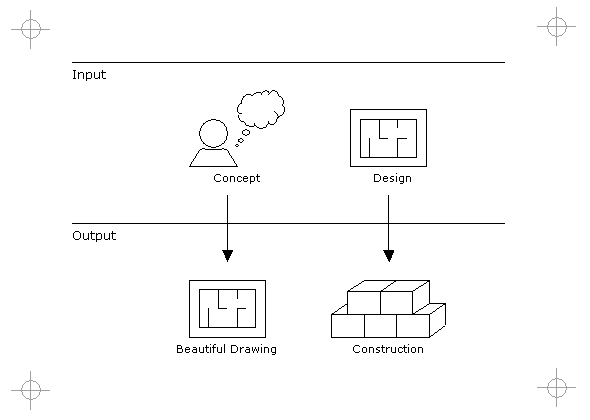|
Diagram
|
|
|

|
|
Title
|
|
|
Beautiful Drawings
|
|
Building Architecture
|
|
|
Beautiful drawings as an end in itself does not constitute architecture. Architectural drawings, diagrams and models result in the construction of something.
|
|
Architecture Intensive Disciplines
|
|
|
Analysis paralysis occurs when a project does not get beyond the analysis and design phase. When systems never get built because design problems cannot be resolved on paper. Models and diagrams must be placed in the context of "prospective", "concurrent" and "retrospective". Rather than trying to keep a single model in sync with the physical state of the system, each diagram must be dated and marked as representing one of 3 states relative to construction. Prospective is a design prior to construction. Concurrent represents a snapshot during construction. Retrospective is a view after construction.
|
|
Case Study A: Large Corporate IT
|
|
|

|
|
|
Not all managers were keen on documentation or supported the initiative for an architecture centered approach. There were concerns about project delivery and that documentation was a burden. Initially, hardly anyone used diagrams. If there was a climate where there were diagrams then perhaps visual modeling could get to a point where it was just about producing "beautiful drawings". In this case their was a distinct absence or shortage of diagrams and models.
|
|
Case Study B: Small Commercial Team
|
|
|

|
|
|
There were hardly any visual models used - except in some case where dependencies were mapped. UML diagrams were often sketched on paper by hand or on a whiteboard to analyse and design, but these were often discarded afterwards once the model was communicated or implemented in the code.
|
|
|